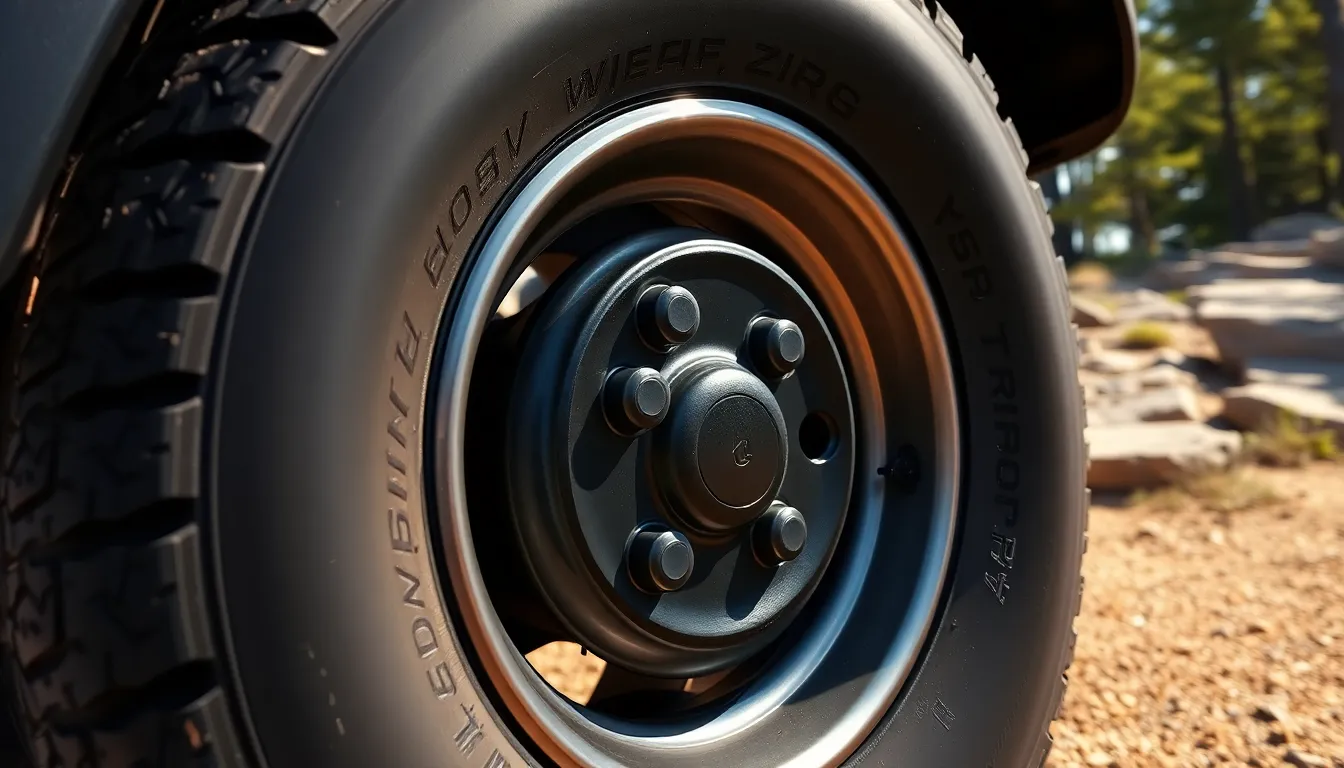When we’re looking to upgrade our Jeep Wrangler’s wheels, understanding the bolt pattern becomes absolutely crucial. Nothing’s more frustrating than finding the perfect set of rims only to discover they won’t fit our ride. The bolt pattern determines which wheels we can safely mount on our Wrangler, and getting it wrong isn’t just disappointing—it’s dangerous.
We’ve all been there: scrolling through endless wheel options online or standing in a tire shop, overwhelmed by technical specifications. The good news? Once we understand our Wrangler’s bolt pattern, wheel shopping becomes significantly easier and more enjoyable.
Whether we’re planning a simple aesthetic upgrade or preparing for serious off-road adventures, knowing our Jeep’s exact bolt pattern specifications will save us time, money, and potential headaches. Let’s jump into everything we need to know about Jeep Wrangler bolt patterns across different model years and generations.
What Is a Bolt Pattern and Why It Matters
Bolt pattern defines the arrangement of wheel bolts or lug nuts on a vehicle’s hub. We measure this pattern using two key specifications: the number of bolts and the diameter of the circle that passes through their centers.
Most automotive bolt patterns use a standardized measurement system. The first number indicates how many bolts secure the wheel to the hub. The second number represents the pitch circle diameter measured in either inches or millimeters.
Common Bolt Pattern Formats:
| Format | Example | Meaning |
|---|---|---|
| 5×4.5 | 5 bolts, 4.5-inch diameter | Imperial measurement |
| 5×114.3 | 5 bolts, 114.3mm diameter | Metric equivalent |
| 6×139.7 | 6 bolts, 139.7mm diameter | Heavy-duty applications |
Jeep Wrangler owners encounter exact bolt patterns depending on their model year and generation. These patterns determine which aftermarket wheels fit without modification or adapters.
Incorrect bolt patterns create serious safety hazards during off-road adventures. Wheels with mismatched patterns can loosen unexpectedly or fail to seat properly against the hub surface. The consequences include wheel separation, loss of vehicle control, and potential accidents on challenging terrain.
Our research shows that purchasing wheels without verifying bolt pattern compatibility costs Wrangler owners an average of $800 in returns and restocking fees. Many retailers charge 15-25% restocking fees for returned wheels that customers ordered incorrectly.
Knowing your Wrangler’s exact bolt pattern streamlines the wheel selection process significantly. We can filter thousands of wheel options down to compatible choices within minutes rather than hours of research and guesswork.
Jeep Wrangler Bolt Pattern Specifications by Generation
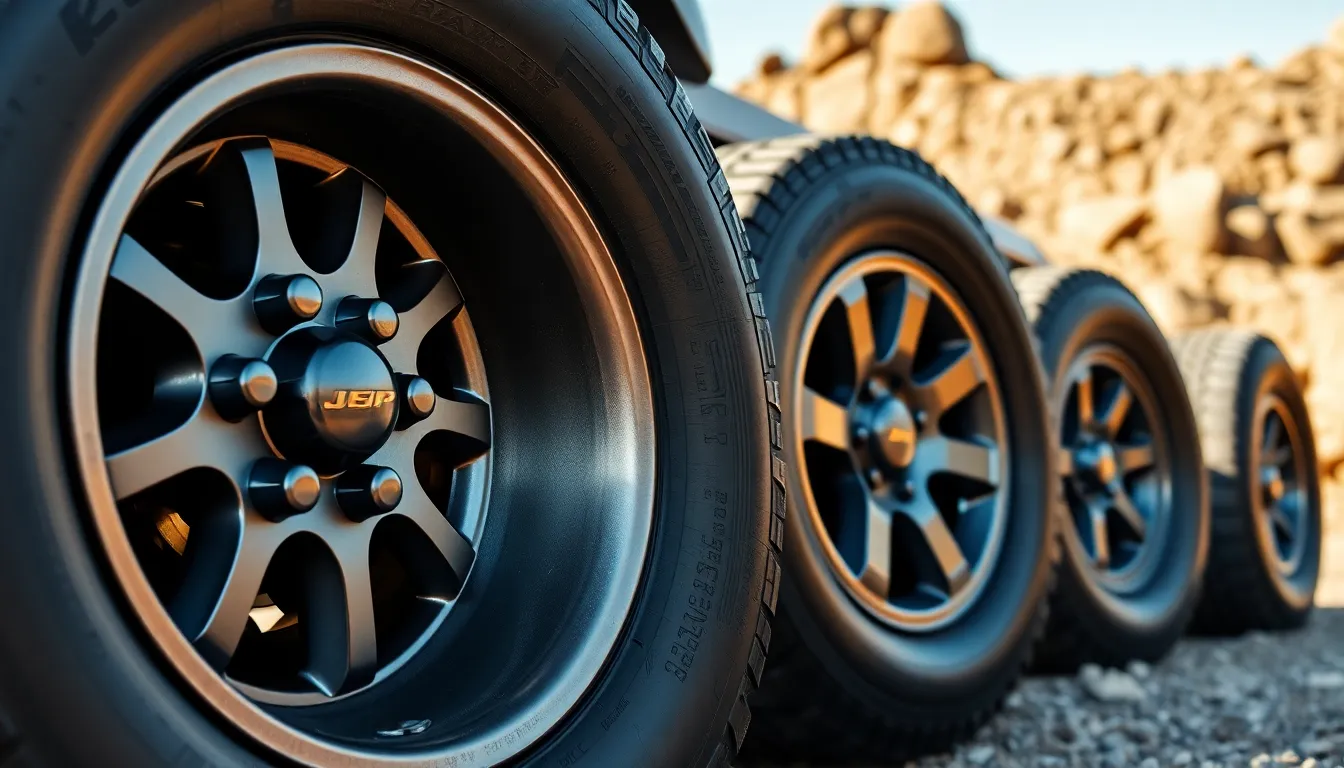
Each Jeep Wrangler generation uses distinct bolt patterns that determine wheel compatibility. Understanding these specifications prevents costly mistakes when selecting aftermarket wheels for your exact model year.
TJ Series (1997-2006)
The TJ generation maintains the 5×114.3 mm bolt pattern, equivalent to 5×4.5 inches in standard measurements. This configuration features five bolt holes arranged in a circle with a 114.3 mm diameter. Owners of TJ Wranglers can interchange wheels with the earlier YJ generation due to identical bolt patterns. Popular aftermarket wheel options for this generation include brands like Method Race Wheels and Black Rhino, which manufacture exact fitments for the 5×4.5 pattern.
JK Series (2007-2018)
JK Wranglers introduced a larger 5×127 mm bolt pattern, measuring 5×5 inches in standard format. This change marked a important departure from previous generations and eliminated compatibility with TJ and YJ wheels. The larger bolt circle accommodates increased vehicle weight and enhanced off-road capabilities. Aftermarket manufacturers responded by developing extensive wheel lines specifically for the JK’s 5×5 bolt pattern, offering options ranging from lightweight aluminum to heavy-duty steel designs.
JL Series (2018-Present)
Current JL Wranglers continue using the 5×127 mm bolt pattern established in the JK generation. This consistency allows JL owners to use many JK-compatible wheels, expanding their aftermarket options significantly. The JL platform maintains the 5×5 inch configuration while incorporating updated hub designs and improved materials. Modern wheel manufacturers produce JL-exact designs that optimize both performance and aesthetics for this generation.
JT Gladiator (2020-Present)
The Gladiator pickup shares the JL platform’s 5×127 mm bolt pattern specifications. JT models use identical wheel mounting configurations as contemporary JL Wranglers, creating broad compatibility between these platforms. This shared bolt pattern enables Gladiator owners to select from the extensive JL wheel catalog. The 5×5 inch pattern accommodates the Gladiator’s increased payload capacity while maintaining compatibility with standard JL aftermarket options.
| Model Generation | Production Years | Bolt Pattern (mm) | Bolt Pattern (inches) |
|---|---|---|---|
| TJ | 1997-2006 | 5×114.3 | 5×4.5 |
| JK | 2007-2018 | 5×127 | 5×5 |
| JL | 2018-Present | 5×127 | 5×5 |
| JT Gladiator | 2020-Present | 5×127 | 5×5 |
How to Measure Your Jeep Wrangler’s Bolt Pattern
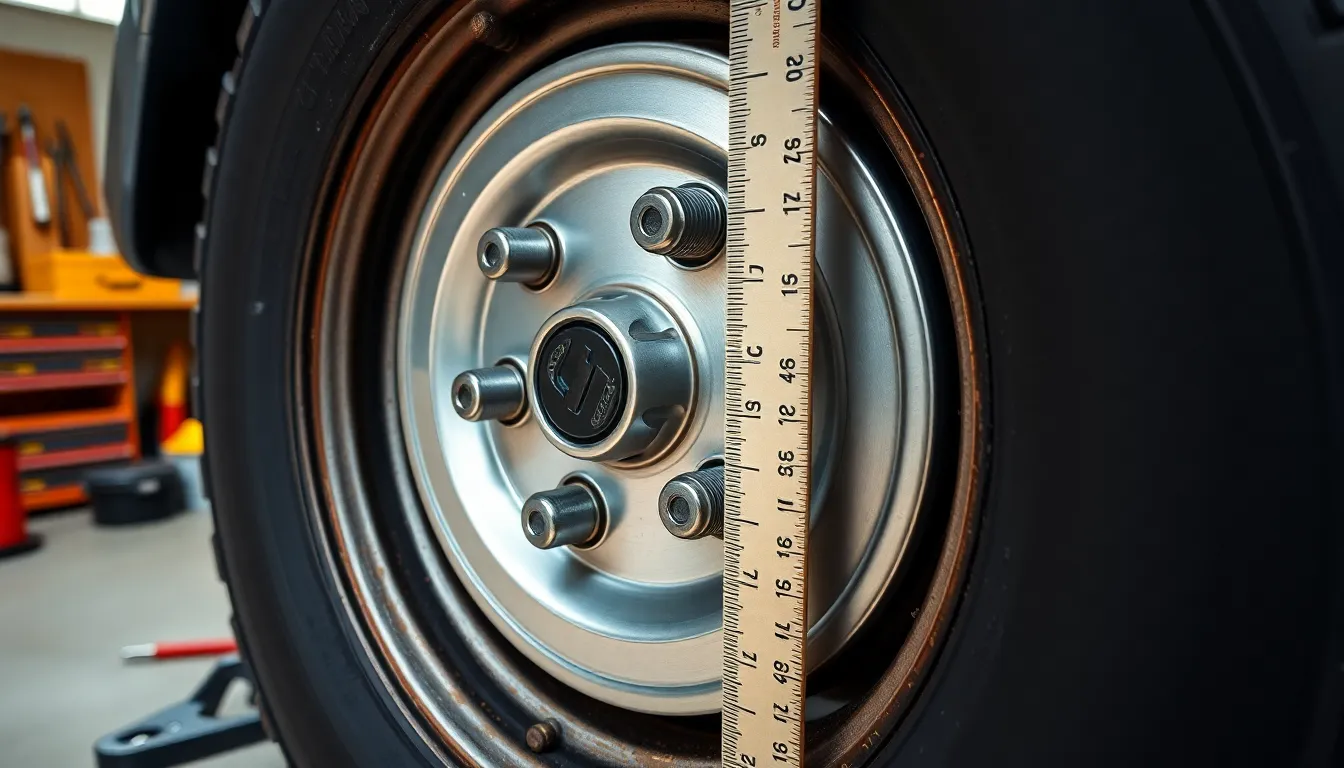
Measuring your Wrangler’s bolt pattern requires two essential measurements that determine wheel compatibility. We start by counting the total number of lug bolts around the wheel hub, which typically equals 5 for all Wrangler generations.
The diameter measurement comes next and demands precise technique for accurate results. We place a ruler from the center of one lug hole directly to the back edge of the hole positioned farthest away, ensuring we skip one hole in between. This technique provides the bolt circle diameter that manufacturers use to specify wheel fitment.
Step-by-Step Measurement Process:
- Count lug bolts – Verify the 5-lug configuration standard across all Wrangler models
- Position your ruler – Place one end at the center of any lug hole
- Skip one hole – Move past the adjacent hole to reach the target measurement point
- Measure to back edge – Extend the ruler to the farthest edge of the opposite hole
- Record the distance – Note whether the measurement appears in inches or millimeters
Digital calipers provide superior accuracy compared to standard rulers when measuring bolt patterns. We recommend using calipers for measurements under 6 inches since they eliminate parallax errors common with ruler readings.
Converting between measurement systems becomes necessary when comparing wheel specifications. The 5×4.5 pattern equals 5×114.3mm, while the 5×5 pattern converts to 5x127mm for modern JK and JL generations.
Professional tire shops often verify bolt pattern measurements using specialized gauges that ensure precise fitment. We suggest confirming your measurements with a tire professional before purchasing expensive aftermarket wheels, especially for off-road applications where wheel integrity remains critical.
Compatible Wheel Options for Jeep Wrangler

Selecting compatible wheels for your Jeep Wrangler requires matching the exact bolt pattern specifications for your model’s generation. We’ve identified the critical factors that determine wheel compatibility for both factory replacements and aftermarket upgrades.
OEM Wheel Compatibility
JK and JL models from 2007 to present require wheels with a 5×5 inch bolt pattern for proper fitment. Original equipment manufacturer wheels must precisely match these specifications to ensure proper fit, safety, and performance standards. YJ and TJ models manufactured between 1987 and 2006 use wheels with a 5×4.5 inch bolt pattern exclusively.
Factory wheel designs undergo extensive testing to meet Jeep’s safety and performance standards for each generation. Replacing damaged or worn OEM wheels with identical specifications maintains your Wrangler’s original handling characteristics and warranty coverage. We recommend verifying your model year before ordering replacement wheels to avoid compatibility issues.
Aftermarket Wheel Considerations
Many aftermarket wheels are available in both 5×4.5 and 5×5 bolt patterns, making it essential to select the correct specification for your Wrangler’s year and generation. Aftermarket shops typically carry many options for Jeep Wranglers due to the popularity of the 5 lug bolt pattern configuration.
Incorrect bolt pattern selection can result in unsafe driving conditions, poor handling, and possible damage to wheel hubs and components. Measuring your Jeep’s bolt pattern precisely before purchasing is critical for ensuring compatibility with aftermarket options. Aftermarket wheels often provide enhanced styling options, weight reduction benefits, and specialized designs for off road applications compared to standard OEM offerings.
| Generation | Years | Bolt Pattern (Lug Count x Diameter) |
|---|---|---|
| YJ | 1987-1995 | 5 x 4.5 inches (5 x 114.3 mm) |
| TJ | 1997-2006 | 5 x 4.5 inches (5 x 114.3 mm) |
| JK | 2007-2018 | 5 x 5 inches (5 x 127 mm) |
| JL | 2018-present | 5 x 5 inches (5 x 127 mm) |
Understanding your Wrangler’s bolt pattern specifications enables confident wheel selection whether you’re choosing OEM replacements or exploring aftermarket upgrades. Matching your model’s bolt pattern exactly maintains vehicle safety and performance standards across all driving conditions.
Bolt Pattern Comparison with Other Jeep Models
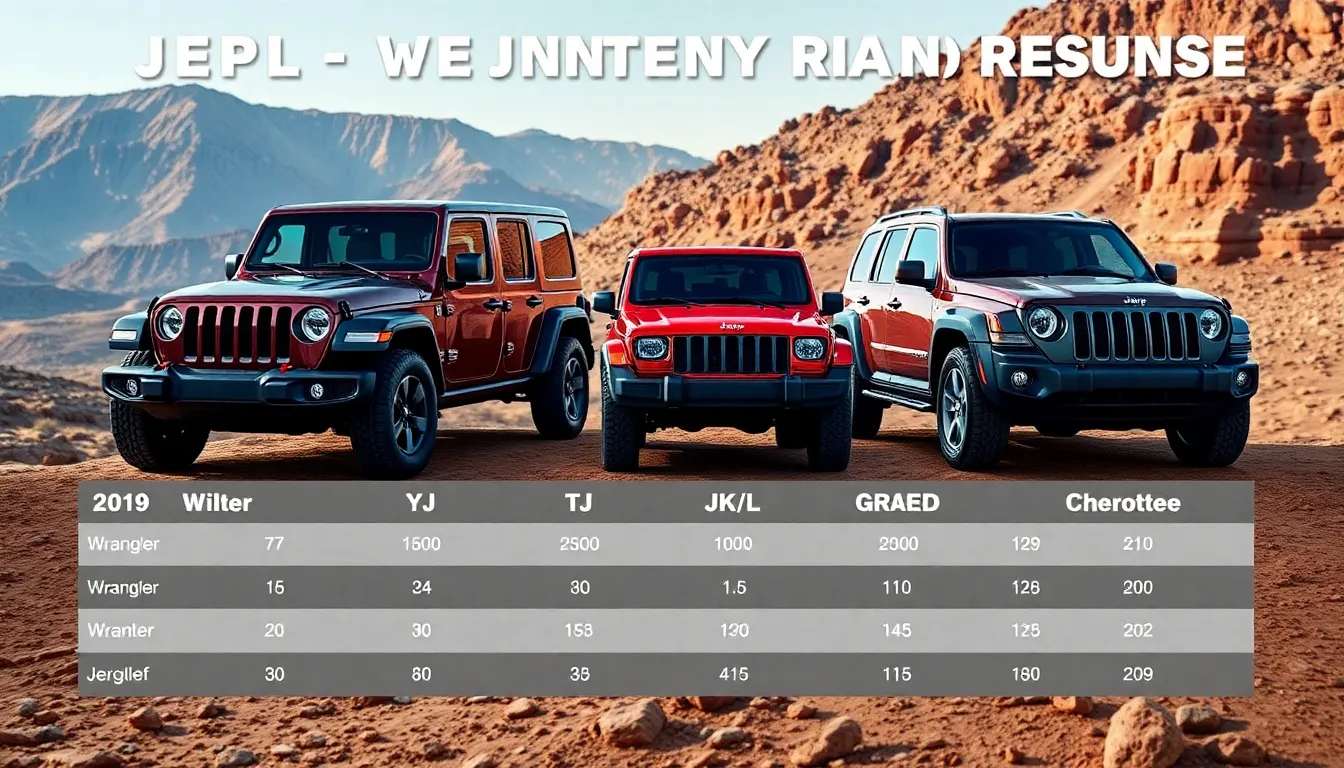
Understanding how Wrangler bolt patterns compare with other Jeep vehicles helps us make informed decisions when shopping for compatible wheels across the Jeep lineup. Different Jeep models use varying bolt configurations based on their size, weight, and intended purpose.
Wrangler YJ and TJ generations share the same 5×114.3 mm pattern with Grand Cherokee models from 1993-1998. This compatibility creates extensive wheel sharing opportunities between these vehicles. Grand Cherokee models from 1999-2020 adopted the larger 5×127 mm pattern, matching modern JK and JL Wranglers perfectly.
| Model | Years | Bolt Pattern |
|---|---|---|
| Wrangler YJ | 1987-1995 | 5×114.3 mm (5×4.5 in) |
| Wrangler TJ | 1997-2006 | 5×114.3 mm (5×4.5 in) |
| Wrangler JK/JL | 2007-2024 | 5×127 mm (5×5 in) |
| Grand Cherokee (1993-1998) | 1993-1998 | 5×114.3 mm (5×4.5 in) |
| Grand Cherokee (1999-2020) | 1999-2020 | 5×127 mm (5×5 in) |
| CJ5, CJ7, CJ8 Scrambler | 1955-1986 | 5×139.7 mm (5×5.5 in) |
Classic CJ models use a completely different 5×139.7 mm pattern, making them incompatible with any modern Wrangler generation. These vintage Jeeps require specialized wheel options due to their unique bolt configuration. Cherokee XJ models also follow the 5×114.3 mm standard, creating additional compatibility with older Wrangler generations.
Liberty and Compass models typically use smaller 5×100 mm or 5×110 mm patterns, preventing wheel interchange with Wranglers. These compact Jeep vehicles require their own exact wheel selections. Commander models share the 5×127 mm pattern with modern Wranglers, expanding our wheel options significantly.
Knowing these compatibility relationships saves us time when browsing used wheel markets or considering wheel swaps between family vehicles. Cross compatibility between exact model years increases our available wheel inventory substantially.
Common Issues and Solutions When Changing Wheels
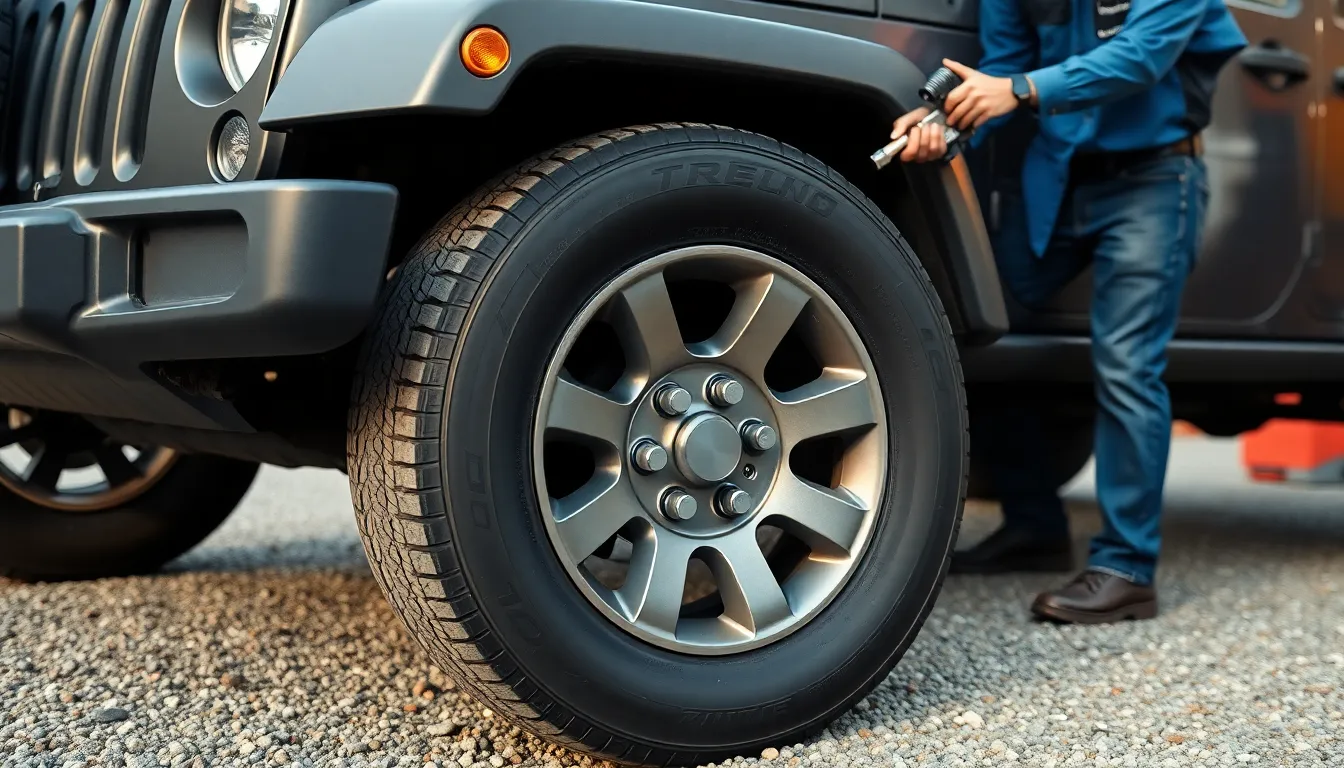
Incorrect bolt pattern selection creates the most frequent problem when upgrading Jeep Wrangler wheels. Safety issues and potential damage to the wheel hub assembly occur when owners install wheels that don’t match their vehicle’s specifications. We recommend confirming your Wrangler’s exact bolt pattern before purchasing any wheels – JL and JK models require 5×127 mm wheels while YJ and TJ generations use 5×114.3 mm patterns.
Swollen lug nuts present another important challenge during wheel changes. Rust and corrosion cause these nuts to expand, making removal extremely difficult with standard tools. Applying rust-inhibiting coatings to existing lug nuts prevents this issue from developing. When dealing with already swollen nuts, we suggest using penetrating lubricant and wrenches with enhanced grip surfaces to safely remove them without damaging the wheel studs.
| Issue Type | Primary Cause | Prevention Method | Solution Approach |
|---|---|---|---|
| Incorrect Bolt Pattern | Wrong wheel selection | Verify specifications before purchase | Return incompatible wheels; measure pattern accurately |
| Swollen Lug Nuts | Rust and corrosion | Use rust-resistant coatings | Apply lubricant; use enhanced grip tools |
| Hub Damage | Improper installation | Follow torque specifications | Professional inspection and repair |
Hub damage often results from forcing incorrectly sized wheels onto Wrangler hubs. Over-tightening lug nuts or using impact tools without proper torque settings causes stress fractures in the hub assembly. We always recommend following manufacturer torque specifications and using a calibrated torque wrench for final installation. Professional inspection becomes necessary when hub damage occurs, as compromised hubs can lead to catastrophic wheel failure during off-road adventures.
Cross-threading represents another common installation error that affects wheel mounting safety. Threading lug nuts at incorrect angles damages both the nut and wheel stud threads. Starting each lug nut by hand ensures proper thread engagement before using power tools. Replacing damaged wheel studs requires professional service, as improper stud installation can compromise the entire wheel assembly’s integrity.
Best Practices for Wheel Installation and Maintenance
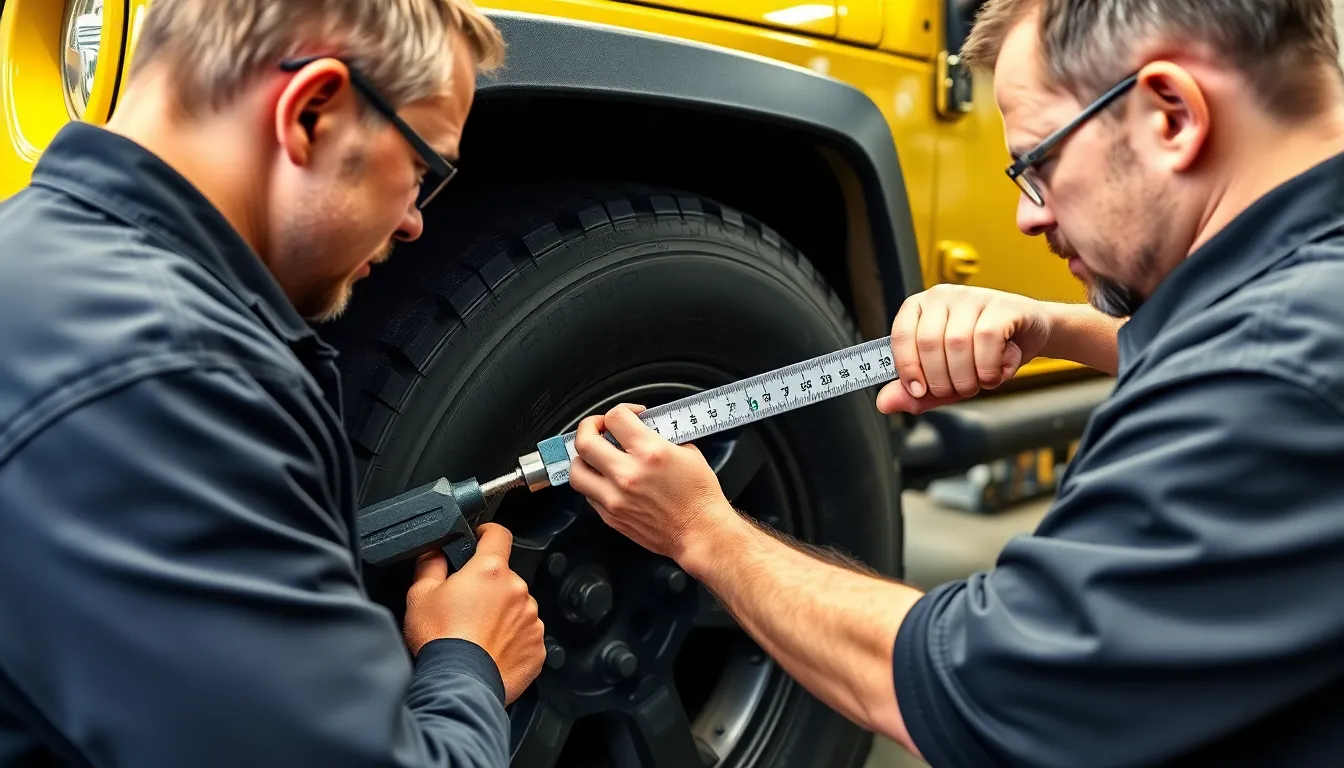
Confirming compatibility represents the foundation of safe wheel installation on Jeep Wranglers. We verify bolt patterns alongside additional specifications like lug nut size, center bore dimensions and offset measurements before installing new wheels. Matching these measurements prevents costly mistakes and ensures optimal performance across all driving conditions.
Proper torque tools eliminate installation problems that compromise wheel safety. We use calibrated torque wrenches to tighten lug nuts according to manufacturer specifications, preventing warping and stripping that occurs with incorrect tension. Starting each lug nut by hand ensures proper thread engagement and prevents cross-threading damage to wheel studs.
Regular inspection prevents rust accumulation and swollen lug nuts that create removal difficulties. We check for corrosion buildup on lug nuts and apply rust-inhibiting coatings during routine maintenance intervals. Penetrating lubricant and enhanced grip tools help remove already compromised components without damaging surrounding hardware.
Damage assessment becomes critical after off-road activities and impact events. We inspect wheels and hub assemblies for cracks, deformation or stress fractures that develop during extreme driving conditions. Visual examination of wheel mounting surfaces reveals problems before they escalate into safety hazards.
Tire pressure maintenance ensures even wear patterns and stable handling characteristics. We monitor inflation levels according to recommended specifications, adjusting pressure based on load conditions and driving environments. Proper inflation extends tire life while maintaining traction performance on various terrain types.
Periodic hardware checks secure all wheel components after demanding driving situations. We examine lug nuts, wheel studs and mounting hardware following off-road adventures or extended highway travel. Professional service becomes necessary when replacing damaged wheel studs to preserve wheel assembly integrity.
| Maintenance Task | Frequency | Critical Points |
|---|---|---|
| Bolt pattern verification | Before new wheel purchase | Match 5×114.3 mm (YJ/TJ) or 5×127 mm (JK/JL) specifications |
| Torque specification check | Every wheel installation | Use calibrated torque wrench per manufacturer requirements |
| Rust inspection | Monthly intervals | Apply rust-inhibiting coatings to prevent swollen lug nuts |
| Damage assessment | After off-road activities | Check for cracks, deformation in wheels and hub assemblies |
| Tire pressure monitoring | Weekly basis | Maintain recommended PSI for load and terrain conditions |
| Hardware security check | After extreme driving | Inspect all mounting components for loosening or damage |
Conclusion
Understanding your Jeep Wrangler’s bolt pattern isn’t just about buying the right wheels—it’s about ensuring your safety and maximizing your investment. We’ve shown you how this simple specification can save you hundreds of dollars in returns and keep you safe on those challenging trails.
Whether you’re driving a classic TJ with its 5×4.5 pattern or a modern JL with the larger 5×5 configuration we’ve covered the essential knowledge you need. The measurement techniques and compatibility charts we’ve provided will serve as your go-to reference for any future wheel purchases.
Remember that proper installation and regular maintenance are just as important as choosing the right bolt pattern. By following the best practices we’ve outlined you’ll enjoy reliable performance and peace of mind on every adventure your Wrangler takes you on.
Frequently Asked Questions
What is a bolt pattern on a Jeep Wrangler?
A bolt pattern defines the arrangement of wheel bolts on your Wrangler’s hub. It’s measured by the number of bolts and the diameter of the circle through their centers. For example, 5×4.5 means 5 bolts arranged on a 4.5-inch diameter circle. Knowing your bolt pattern is essential for safe wheel upgrades.
What bolt pattern does my Jeep Wrangler use?
The bolt pattern depends on your Wrangler’s generation. TJ Series (1997-2006) uses 5×114.3 mm (5×4.5 inches). JK Series (2007-2018), JL Series (2018-Present), and JT Gladiator (2020-Present) all use 5×127 mm (5×5 inches). Check your owner’s manual or measure to confirm your specific pattern.
Can I use JK wheels on a JL Wrangler?
Yes, JK and JL Wranglers share the same 5×127 mm bolt pattern, making them compatible. However, always verify other specifications like offset and center bore dimensions before installation. This compatibility gives JL owners access to a wide range of JK aftermarket wheel options.
How do I measure my Wrangler’s bolt pattern?
Count the lug bolts (typically 5) and measure the diameter. Use a ruler to measure from the center of one lug hole to the back edge of the hole positioned farthest away, skipping one hole between. For accuracy under 6 inches, use digital calipers and consider professional confirmation.
What happens if I use the wrong bolt pattern?
Using incorrect bolt patterns creates serious safety hazards including wheel separation and loss of vehicle control. Mismatched wheels won’t properly secure to your hub, especially dangerous during off-road adventures. Always verify compatibility before purchasing to avoid potential accidents and costly returns.
Are Wrangler wheels compatible with other Jeep models?
Some compatibility exists between generations. YJ/TJ Wranglers (5×114.3 mm) share patterns with 1993-1998 Grand Cherokees and Cherokee XJ models. JK/JL Wranglers (5×127 mm) match 1999-2020 Grand Cherokees. Classic CJ models use different patterns and aren’t compatible with modern Wranglers.
What tools do I need for wheel installation?
Essential tools include a calibrated torque wrench to meet manufacturer specifications, digital calipers for accurate measurements, and rust-inhibiting coatings for maintenance. Never use impact wrenches for final tightening. Start lug nuts by hand to prevent cross-threading and ensure proper engagement before torquing.
How often should I check my wheel bolts?
Inspect wheel bolts regularly, especially after off-road driving. Check torque specifications every 1,000 miles or monthly, inspect for rust and damage weekly, and monitor tire pressure monthly. After demanding driving conditions, immediately verify all hardware is secure and properly torqued for safety.

